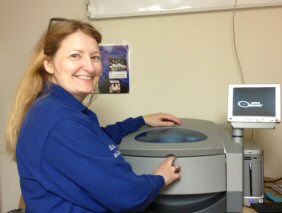Ask the Labs, Eyecare Business
If a patient has a high-plus or high-minus Rx, which frame characteristics should be taken into consideration to ensure it will work best with the lenses?
When working with a patient with a high-plus or high-minus lens Rx, say over four or five diopters in total power, the following tips can help:
In general, rounder and smaller shapes are best for reducing edge thickness. One key factor in reducing edge thickness is picking a frame that requires the least amount of decentration. Decentration is the natural enemy of high-power lenses, as decentration increases, so does edge thickness. Another way to look at it: The closer the geometric center of each eye is to the pupil, the less edge thickness there will be.
Of course, other aspects of frame choice also have a role to play. A frame that hides more of the lens edge will help improve aesthetics— with plus lenses the thickness will tend to be in the nasal, with minus lenses it will be the temple edge. Be careful with drills and rimless groove frames; instead consider zyl or metal frames with thicker eyewires.
As for wraps, they are designed for lower powers, typically from -3.00D to +3.00D, and can become risky above this range. For wraps in general, we strongly recommend consulting the frame manufacturer to determine the lens range the frames were designed to accommodate.
— Swen Carlson, vice president, operations, VSP Optics Group
 Our representatives from Optical Dynamics and Vision Dynamics Laboratory are pleased to attend this year’s Vision Expo West Thursday September 15th through Saturday September 17th. Although not exhibiting at the show, our representative will be available for onsite appointments should you wish to meet and discuss our Digital Lens Technology and/or Lab Services.
Our representatives from Optical Dynamics and Vision Dynamics Laboratory are pleased to attend this year’s Vision Expo West Thursday September 15th through Saturday September 17th. Although not exhibiting at the show, our representative will be available for onsite appointments should you wish to meet and discuss our Digital Lens Technology and/or Lab Services.